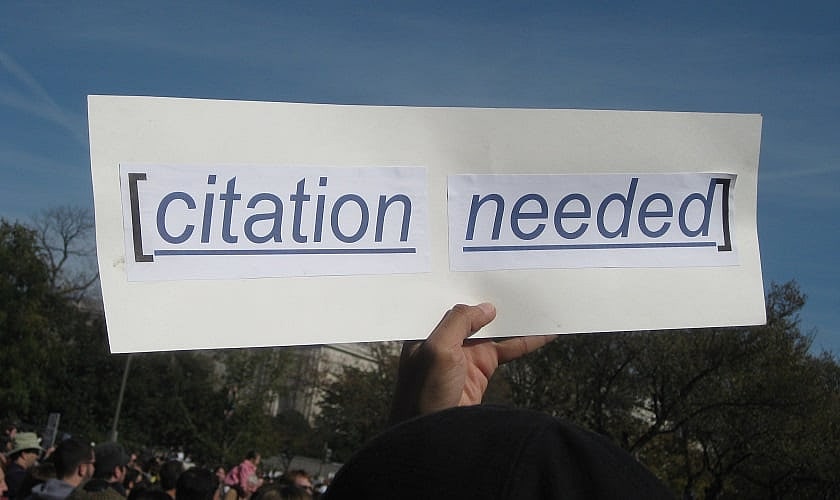9 Essay Pitfalls and How to Avoid Them
Writing essays is a mainstay of education from secondary school through to university, and no matter how well you know the subject in question, if you can’t write a good essay, your marks will suffer.
Different academic traditions approach essays in different ways, so in this article we’re going to focus on the kind of essay expected in British schools and universities; the kind you’d be taught how to write, for instance, at our Oxford summer school. That kind of essay should put forward an argument, develop it through several different points, and conclude in a way that marries the points together and reinforces your original argument.
It sounds straightforward, but as anyone who’s ever had to write an essay knows, it isn’t always so simple. Here are the types of error people make when writing essays, and how you can avoid them.
1. The list

Perhaps the most common type of bad essay is the list. This can be a result of bad essay writing, but bad question-setting also plays a role. Take the classic essay topic of the causes of the First World War. One way of phrasing a question on this could be simply, “What were the causes of the First World War?” It naturally lends itself to a list; you could almost answer in bullet point. To avoid the list, you’d have to distort the question. Another question could explore the same area of knowledge, but encourage a better-structured essay, such as “Was the First World War inevitable?” or “Was imperialism responsible for the First World War?” You’ll know if you’ve fallen into the trap of writing a list if words like “moreover”, “furthermore” and “additionally” are creeping into your essay more than “therefore” and “however”.
To avoid just writing a list, first see if the question invites a list, and if so, reframe it in your head in order to construct an argument. In the First World War example, you could say, “It is popularly believed that the chief cause of the First World War was… but the causes of war in fact went much deeper…” – and then you’re arguing, rather than listing, right away. Consider also which items on your list are more important or less important, and how they interact with each other, and make sure that you come to a firm conclusion that picks a stance and doesn’t settle for “there were many causes, all important” or related waffle.
2. The weighing scales

The “weighing scales” approach to writing an essay is when you have a choice of two options, and you come down firmly on the fence. This is particularly common in essays on a difficult or controversial topic, such as, “Would justice be better served if criminals were given longer prison sentences?” The weighing scales approach would say, “on the one hand, some criminals are treated too leniently… on the other hand, longer prison sentences can increase recidivism… then again, longer sentences may act as more of a deterrent… but they also cost the state a lot of money.” The essay then concludes that there are strong arguments in favour of both sides, and perhaps that more research is needed (even when there has been plenty of research on the topic).
In some academic disciplines and some cultures, the “weighing scales” approach to an essay is considered actively desirable. But that’s not the case for British universities. While it’s important to mention both sides (more on that in a moment), an essay should advance an argument. If you conclude that both sides have merit, your argument should at least propose a way of navigating between them. Make sure that by the end of your essay, your reader knows what your opinion is.
3. The polemic

The direct opposite of the “weighing scales” approach is the polemic. In this kind of essay, your reader is in no doubt at all about what your point of view is; unfortunately, they’ve heard rather too much of it and rather too little of anything else. Continuing on the same example as above, in the polemic, you might argue that prison is wholly negative, based on punishment not rehabilitation, leading to worse outcomes for prisoners than alternatives like community service, and introducing ‘new’ criminals to experienced ones so that they end up learning not how to avoid crime, but how to become better at it.
While all those points are reasonable, the issue is that the other side is altogether missing. In a “polemic”-style essay, the writer rejects the other side so much that they won’t even discuss their ideas. That’s not persuasive; you also need to spend time acknowledging and refuting the alternative point of view. You don’t need to accept it, only explain where it comes from, and why it’s mistaken.
4. The literature review

A literature review is a perfectly valid piece of writing: it’s where you look at everything that’s been written on a particular topic, and compare, contrast and analyse the writers’ stances without interjecting too much of your own views. It’s a standard part of theses and dissertations, allowing you to establish the thoughts of the major authorities in the field so that you can refer to them later in the piece without the need for a lengthy introduction.
But if you’re not supposed to be writing a literature review, then your essay shouldn’t resemble one. After all, it’s about assessing your knowledge, ideas and opinions, not everyone else’s. When a subject has been written about extensively, it can feel impossible to produce an original thought on it. You can end up attributing every point you want to make to another writer, because otherwise it can feel like plagiarism. But while every point might have been said before, your route through them and your reasoning will still be original. Make sure your own point of view is established, without relying too heavily on the literature.
5. The plagiarist

The opposite of the literature review, the “plagiarist” is the essay that passes off a little too much as your own work when it really ought to be credited to someone else. To be clear, we’re not talking about genuine copy-and-paste plagiarism (or the same thing with a couple of words tweaked and examples changed, which is no better) – that’s not a pitfall, that’s grounds for expulsion. This is instead where you’ve maybe read an idea, forgotten which article or book you read it in – or even that it wasn’t your idea in the first place – and put it in an essay without a citation. But even if you didn’t do it deliberately, it’s likely to be frowned on by your teachers.
The only way to avoid the “plagiarist” essay is to take more thorough notes when you’re working on an essay. If you read something interesting, even if you don’t think it’s relevant, make a note of where you found it in case you do want to refer back to it. If you’re feeling really lazy, just take a photo of the details on your phone. Then you can make sure you’re not taking credit for ideas that aren’t your own.
6. The long introduction

This one is reasonably self-explanatory – it’s when it feel like the majority of the essay is introduction or scene-setting, and you never really get to the point. To go back to the earlier example of an essay on the causes of the First World War, a “long introduction” essay would spend paragraphs describing the context, the different countries and personalities involved, not to mention their histories – and then, running out of word count, would cram in a paragraph or two at the end about how all of this resulted in war.
A “long introduction” essay can be the result of misjudging the word count (and more on that later) but it can also be the result of knowing a great deal about a topic and not wanting to commit to an argument. Avoid the long introduction by making sure your argument is clear from your introduction onwards. Sometimes students also structure an essay by starting with their weaker points and leading to their best point, as a kind of rhetorical crescendo. This can be effective if done well, but it can also lead to a “long introduction” essay as your reader has to sit through paragraphs of muddle waiting for you to get to your real knock-out idea.
7. The textbook

Another perfectly valid piece of writing that nonetheless makes for a poor essay is the “textbook” approach. Instead of writing an essay – with points, examples, explanations and an argument running through it all like a stick of rock – you write an explainer on the topic. This is akin to the list, but typically better written and structured. A “textbook” essay is not necessarily a bad piece of work; it’s just not what’s being asked of you when you write an essay.
Sometimes, when students are shy about expressing their opinion, a “textbook”-style essay is the end result. They outline all the examples and explanations that they might have included without committing to the points. The end result is an essay where the student’s point of view could perhaps be inferred from the approach taken, but where it isn’t made explicit. If this is you, try to express your opinion more assertively; you might be avoiding saying things like “I believe” (as usually essays shouldn’t contain the first person) but try phrases like “it is clear that” or that such and such an alternative argument “is flawed”.
8. The revision notes

The “revision notes” essay is not an essay that resembles revision notes; instead, it’s an essay that’s so painfully light on detail that it reads like you used revision notes rather than doing the reading or research that you were supposed to. It skims over dates; it focuses only on the main characters of a novel; where a reader might expect it to cite another theorist, it avoids it with vague statements such as “many people have argued that…”. Assertions go unexplained and unproven.
Typically the reason a student writes an essay like this is because they’re out of their depth; they haven’t done the work or understood the topic well enough to go into any more detail. If you’re finding that you’re writing this sort of essay even when you do know your topic, go through and see where more detail could be added. Even something like adding dates for events in brackets can give the sense that you know what you’re talking about. Similarly, try to use examples that aren’t the most obvious or default choice for the point that you’re making. It might feel unnecessary when you know the person marking your essay knows these details already, but you have to prove that you know the details as well.
9. The word count challenge

This goes in both directions – the essays where you’re restricted to 2,000 words and you feel like you could write a novel on the subject, and the ones where you have to write 2,000 words and you feel like you could barely manage a paragraph. Every student will have developed some tricks for getting round this, such as changing the margins or font size, or adding or removing contractions and adjectives.
Of course, your teachers are wise to this. It’s much better to write an essay that’s appropriate for the length set in the first place, which means planning it out carefully. If you have what feels like too few points for the word count, can you go into more detail on those points? And if you have too much to say, can your points be grouped together for more of an overview that skips out the finer detail? Or perhaps your approach is too broad, and you can stick more closely to the question asked to condense what you want to say. This is particularly relevant for exams, where realising that you have more to say than time to say it in can be disastrous; the way to avoid it is practising until you have a better sense for how much content you need for a certain exam duration or word count.
Image credits: writing an essay; list; scales; speaker; books; citation; long book; textbooks; post-it note; miniature book.
